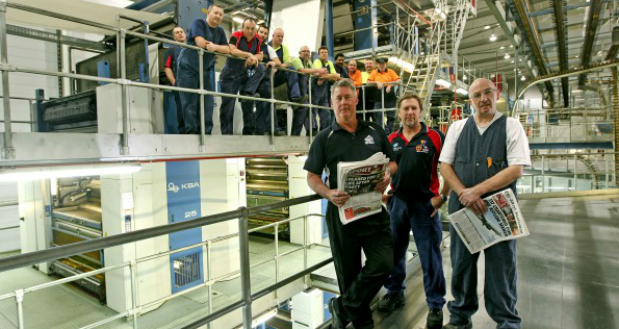
Josef Schließ technical manager at the Süddeutscher Verlag in Munich, Germany recently reported on the company’s energy efficiency project. Modern buildings are highly energy efficient compared to buildings put up twenty to thirty years ago. Josef has said that: “today’s control possibilities compared to 1984, which is when our printing centre was built are much more complex. Plant engineering today permits significantly greater efficiency.” In order to improve the plant’s energy efficiency Süddeutscher Verlag have undertaken some surprising initiatives.
For instance the general compressed air pressure in the factory has been reduced and Süddeutscher Verlag has calculated the specific requirements for each machine’s cooling and ambient air conditioning. Rather than hiring outsiders to provide consulting the company gradually reduced air pressure until machines starting to show signs of malfunctioning! New air compressors were installed so that even when compressed air requirements fluctuate wildly there is no switching on and off which is highly inefficient. Far better to keep them running at a steady rate. The compressors are on all the time and cover around 70% of the maximum peak load. Süddeutscher Verlag is also installing new refrigerating machines to cover the base load. Josef reckons “the investment costs are quickly recuperated through the energy cost savings.”
This is only the start of what newspapers could do to cut emissions related to energy usage. Despite its perennial whinging, the newspaper industry is still profitable and in a strong position to reduce environmental impacts. For instance DMGT boasts in its annual report that the group “includes highly cash generative and resilient UK national newspapers and high growth international B2B businesses, which account for the majority of profits.” The DMGT brought in $26,572,000 in its latest financial year, and turned a profit of almost 13%. And consider the New York Times company’s revenues: to 30th December 2012 group revenues were $1,990,080,000 with a return of 6.69% after exceptional items. Newspapers are the part of our industry that provides most peoples’ primary knowledge and information resource. Shouldn’t some of that profit be directed at promoting sustainability in the business as well as on websites and on the printed page?
– Laurel Brunner
This blog is yours to use if you want, as long as you fully credit the Verdigris supporters who make it possible: Agfa Graphics (www.agfa.com), Digital Dots (www.digitaldots.org), drupa (www.drupa.com), EFI (www.efi.com), Fespa (www.fespa.com), Heidelberg (www.uk.heidelberg.com), HP (www.hp.com), Kodak (www.kodak.com/go/sustainability), Mondi (www.mondigroup.com/products), Pragati Offset (www.pragati.com), Ricoh (www.ricoh.com), Splash PR (www.splashpr.co.uk), Unity Publishing (http://unity-publishing.co.uk) and Xeikon (www.xeikon.com).
Comment below to have your say on this story.
If you have a news story or tip-off, get in touch at editorial@sprinter.com.au.
Sign up to the Sprinter newsletter


